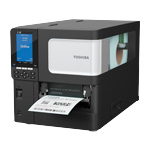The Sixth Environmental Action Plan
Based on world trends including SDGs and ESG investment as well as Toshiba Group's policy, we formulated the Sixth Environmental Action Plan and engaged in relevant activities from fiscal 2017 to fiscal 2020. We missed some of the targets for fiscal 2020, the final year of the action plan, mainly due to the COVID-19 pandemic.
FY2020 Targets and Result
| Indicator | FY2020 Target | FY2020 Result | |
|---|---|---|---|
| Green Management | |||
| Environmental Management | Environmental risk compliance / Environmental human resource development | Strengthen compliance systems at overseas/domestic sites by training environmental auditors and enhancing their performance. | Implemented training for all auditors. |
| External communication (Implementation of Global Environmental Action) | Set a theme of recommended activities for each fiscal year and expand the range of Global Environmental Action activities. | Undertook activities under the recommended theme of “Chemical Substances.” | |
| Biodiversity | Conservation of biodiversity | Expand the activities at all manufacturing sites for the 10 Aichi Biodiversity Targets. | Carried out the 10 Aichi Target activities at all sites. |
| Greening of Products | |||
| Overall | Creation of Excellent ECPs | To gain certification for all models which aim at certification of Excellent ECP in each fiscal year. (100%) | 100% |
| Mitigation of Climate Change | Reduce the amount of CO2 emissions. (thousand t)*1 | 170 | 145 |
| Efficient Use of Resources | Expand the amount of resources saved. (thousand t)*2 | 23.8 | 19.6 |
| Expand the amount of recycled resources (recycled plastics) used. (t)*3 | 587 | 456 | |
| Management of Chemical Substances | Reduce the amount of specified chemical substances. | Complete the reduction in products for the EU before the start of restriction by eliminating the use of specific phthalates. | Completed new products and products for the EU region. |
| Greening of Process | |||
| Mitigation of Climate Change | Total amount of greenhouse gas (GHG) emissions (thousand t-CO2)*4 | 63.5 | 51.8 |
| Amount of CO2 emissions from energy use per unit consumption (t-CO2/100 million yen) (compared to FY2013 levels)*4 | 55.5 (90%) |
62.2 (100%) |
|
| Efficient Use of Resources | Amount of unsellable waste requiring disposal (t)*5 | 1,039 | 770 |
| Amount of generated wastes per unit consumption (t/100 million yen) (compared to FY2013 levels) | 2.67 (76%) |
2.69 (77%) |
|
| Volume of received water per unit consumption (m3/100 million yen) (compared to FY2013 levels) | 571 (85%) |
605 (91%) |
|
| Management of Chemical Substances | Amount of released chemical substances per unit consumption (kg /100 million yen) (compared to FY2013 levels) | 25.4 (44%) |
26.0 (45%) |
- *1.[CO2 emissions of assumed substitute products] – [CO2 emissions of shipped products] (Compare the annual emissions during the usage stage and cumulate emissions for half of the product life)
- *2.[Mass of assumed substitute products] – [Mass of shipped products]
- *3.[Amount of recycled plastics] / [Amount of plastics used in products] × 100
- *4.Receiving-end power is used for the power factor in Japan; for fiscal 2013, 5.67t-CO2/ten thousand kWh is used; for fiscal 2019 and after, 5.31t-CO2/ten thousand kWh is used. WRI/ WBCSD GHG Protocol data in fiscal 2009 is used for overseas.
- *5.[Waste volumes] = [Total volume of waste generated] - [Total volume of waste sold]
Corporate Data
-
- Topics
- CEO Message
- Message from Chief Sustainability Officer
- Toshiba Tec Group Sustainability Policy and Materiality KPI
- Special Feature SDGs x Toshiba Tec
- SDGs of Toshiba Tec
- Environment
- Social
- Governance
- Feature: 5-Minute Guide—Toshiba Tec CSR Activities
- Integrated Report














